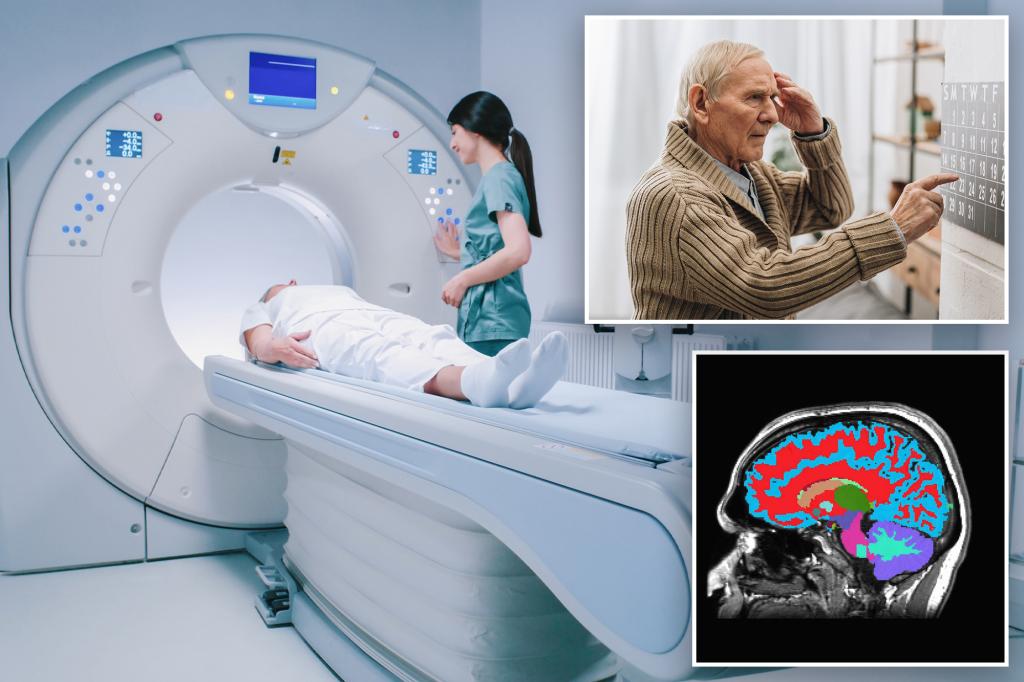Getting older is inevitable — but illness doesn’t have to be.
Scientists have developed a groundbreaking tool that can measure how fast a person is aging and predict their future risk of chronic diseases like dementia using a single brain MRI scan.
Researchers say this early warning could give people the chance to make lifestyle changes while they’re still young and healthy enough to potentially slow or even prevent health problems down the line.
The technology is the brainchild of scientists at Duke, Harvard and New Zealand’s University of Otago, who used data from the Dunedin Study — a decades-long health project tracking over 1,000 New Zealanders born in the early ’70s.
Since birth, participants have been poked, scanned and tested regularly. Researchers have followed everything from their blood pressure and cholesterol to lung and kidney function to map how their bodies have changed over time.
From that mountain of data, the team crunched the numbers to see how fast each person was aging biologically — not based on their birthdate, but on the physical wear and tear their body had endured.
Then they trained the tool, called DunedinPACE-NI, to predict those biological ages using just a single MRI scan of the brain that was taken when participants were 45 years old.
Next, they put the tool to the test, using it to analyze brain scans from people across the US, UK, Canada and Latin America.
Across the board, they found that people with higher aging scores performed worse on cognitive tests and showed faster shrinkage in the hippocampus, the part of the brain crucial for memory and learning.
In one analysis, those who the tool deemed to be aging fastest faced a 60% higher risk of developing dementia compared to people with lower scores. They also started to have memory and thinking problems sooner.
When the team first saw the results, “our jaws just dropped to the floor,” Ahmad Hariri, a Duke professor of psychology and neuroscience, said in a statement.
“What’s really cool about this is that we’ve captured how fast people are aging using data collected in midlife,” he noted. “It’s helping us predict diagnosis of dementia among people who are much older.”
Brain decline wasn’t the only red flag the tool picked up.
People with higher DunedinPACE-NI scores were also more likely to suffer from age-related frailty, heart attacks, strokes, lung disease and other chronic illnesses.
Even more striking, they were 40% more likely to die within the next several years than their slower-aging peers.
Notably, the tool’s accuracy held up across race, income and geographic location.
“It seems to be capturing something that is reflected in all brains,” Hariri said.
A ticking clock
The new tool arrives as people are living longer than ever. By 2050, nearly a quarter of the global population will be over 65 — twice as many seniors as today, according to the World Health Organization.
A longer life sometimes comes with a catch.
“More people are unfortunately going to experience chronic age-related diseases, including dementia,” Hariri said.
Studies predict 152.8 million people worldwide will be living with dementia in 25 years — up from 57.4 million cases in 2019.
Despite this sharp rise, effective treatments for Alzheimer’s and other dementias remain elusive. Most drugs on the market can help manage symptoms, but fail to stop or reverse the disease.
One reason existing treatments haven’t worked, Hariri theorized, is that they often start too late — after the disease has already done too much damage.
“Drugs can’t resurrect a dying brain,” he said.
But the new tool could change that by identifying people at risk of Alzheimer’s earlier, allowing for interventions before extensive brain damage occurs.
Beyond just predicting dementia risk, the new clock will help scientists figure out why people with certain risk factors — like poor sleep or mental health issues — age differently, said Ethan Whitman, first author on the study and a clinical psychology PhD candidate at Duke.
However, he noted that more work is needed to turn DunedinPACE-NI into a tool that everyday healthcare providers can use.
In the meantime, the team hopes the tool will help researchers with access to brain MRI data to measure aging in a way that algorithms based on other biomarkers, such as blood tests, can’t.
“We really think of it as hopefully being a key new tool in forecasting and predicting risk for diseases, especially Alzheimer’s and related dementias, and also perhaps gaining a better foothold on progression of disease,” Hariri said.


